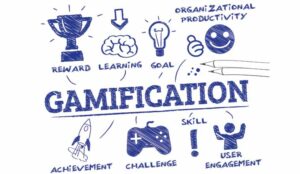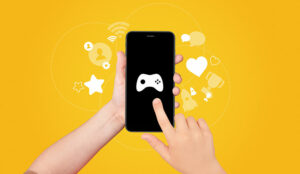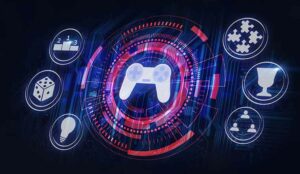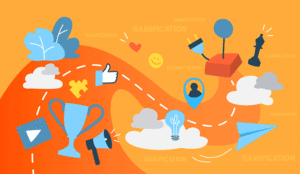Michal Rutzky of NICE promotes the use of gamification in the contact centre to improve agent motivation and performance.
Call centre managers are always looking for ways to ensure that agents work productively, meet their KPIs, and stay with the company.
It’s a constant challenge to motivate good performers to stay the course and even raise the bar on the KPIs they are able to achieve.
At the same time, employees who are falling short of expectations may need some external motivation and a friendly “push” to improve.
When done right, gamification can be an effective and fun way to drive agent motivation and performance.
Playing the Right Games
Gamification in the workplace involves an element of competition. Employees may compete with themselves, or with one another for desired rewards.
When considering gamification to drive motivation, it is critical to understand what kind of competition and “games” are best suited to your employees.
Rather than create winners and losers, gamification in the workplace should be a win–win proposition for everyone involved. Otherwise, your gamification project may fail, as many have done.
What’s Not to Like?
When gamification in the workplace fails, it is typically due to insufficient planning or bad design. Here are just a few indicators that you are not playing the right game to achieve your business goals:
- Relying on applications that aren’t suitable to your needs. In the rush to gamify and make work more enjoyable, too many companies adopt off-the-shelf applications that can be implemented quickly. Often, these solutions were designed with a narrow focus (single measure) or for a different kind of workplace than yours (industry, type of job, number of employees, etc.).
- Gamification doesn’t elicit the desired effect. Instead of motivation, some employees may feel stressed out about being overly monitored and pressured to perform. Highly competitive employees may be tempted to cheat or even sabotage colleagues in order to be first on the leaderboard.
- Gamification requires too much extra effort. Games that don’t fit your staff and their workflow are often seen as an added burden and may be met with half-hearted adoption or even resistance.
- Employees were not consulted. Experts estimated that 80% of business transformation efforts fail due to lack of employee engagement. Employees are much more enthusiastic and committed when they are involved in gamification planning and design.
Ground Rules for Gamification in the Workplace
With the right planning and design, gamification is a very effective way to make work in the call centre more enjoyable and to achieve much better performance results. This is especially true in the digital era, where instant feedback and gratification have become integral parts of our daily lives.
We constantly adjust and readjust our focus, based on the immediate feedback we get from social media, games and apps. The same is true in the workplace.
Gamification tools tap into this growing need for instant response, gratification and rewards. Employees want to know how they are performing—and that the work they do is important.
Games That Really Matter
When introducing game elements into the workplace, it is important not to get caught up the in the “coolness” of gaming and lose sight of the measurable business goals you want to achieve in terms of real-time performance management and employee engagement.
The goal is not to turn work into a game, but to use gaming psychology and digital tools to drive certain behaviours.
Gamification should be designed to give employees full visibility into their goals as individuals and as a team. It should intuitively guide them toward the actions and behaviours that will produce the desired results.
Finally, gamification must provide fair and objective recognition to employees who do the right thing, while motivating everyone to engage and do their personal best.
What Makes Gamification in the Workplace Work Best?
The game elements you introduce in the workplace should have a positive effect on employee motivation, KPIs, employee–peer relations, and employee–management relationships.
It works best when the following key considerations are included in the planning and design of gamification apps:
Define what you want to achieve. Once the goals are clear, you can identify what is needed to achieve them. For example an off-the-shelf gamification app may be designed to motivate call centre agents to reduce average handle time (AHT) or improve first call resolution (FCR) and that’s fine.
But rather than focus on a simple output, you may want to gamify more complex measures associated with customer satisfaction or quality.
Define the outcomes you expect. What sort of response or behaviour do you want to elicit from employees? What must they do to earn points or get rewards?
Will employees intuitively understand how game elements and scoring are connected to KPIs and the business objective of the call centre? It’s good to consult and involve employees in these definitions to be sure expectations are realistic and can be met.
Choose game elements that fit your team and workflows. Gamification can be used to improve almost any situation. For example, when mobile or remote agents are not in the office and directly visible to managers, gamification is a great way to track, communicate, and reward employees and to make sure they feel like part of the team.
Via a digital app, users get immediate feedback and transparent reporting on their own progress as well as the progress of their co-workers.
Focus the design on user experience. To ensure employees will readily adopt and use gamification once implemented, try to avoid app designs that require a steep learning curve or aren’t simple to use.
Does the proposed game app fit into existing workflows? Can it be integrated with other tools that employees use every day?
Here too, employees who are asked to contribute user interface ideas and are involved in beta testing will be the best champions of gamification once it’s rolled out.
Finding the Right Balance for Gamification in the Workplace
Work can’t be all fun and games. That’s why it’s called “work.” While gamification in the workplace can motivate employees to do their best and make work more enjoyable, the right balance must be struck.
It may be a balance between tech-driven processes versus human-touch solutions, or a balance between highly competitive gamification designed for fast results versus more moderate gamification that aims for gradual improvement and is less competitive and stressful for employees.
As your call centres goes through its own digital transformation, gamification done right can be a very effective tool to engage employees and achieve the business results you desire.
Author: Robyn Coppell
Published On: 18th Jun 2020 - Last modified: 22nd Dec 2023
Read more about - Guest Blogs, NiCE
















